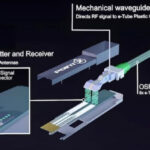When setting up a home or office network, you may find yourself facing a common challenge: your internet service or existing wiring uses coaxial cables, while your devices require Ethernet connections. Since coax and Ethernet are different technologies, a simple plug adapter won’t work. Instead, you’ll need the right equipment to make the conversion.

coax cable to ethernet
This guide explains how to go from coax cable to Ethernet, the available methods, and when each option makes sense.
What’s the Difference Between Coax and Ethernet?
Coaxial Cable (Coax): Traditionally used for TV signals and broadband internet from ISPs (cable companies). It carries radio frequency signals over a single copper conductor with shielding.
Ethernet Cable (Cat5e, Cat6, Cat6a, etc.): The standard for local area networks (LAN), used to connect routers, switches, and devices like computers, smart TVs, and gaming consoles.
Because coax and Ethernet use different signaling methods, you cannot simply wire them together. A converter or adapter is always required.
How to Convert Coax Cable to Ethernet
1. Use a Cable Modem (For ISP Internet)
If your internet service comes through coax (e.g., Comcast, Spectrum, Cox), you’ll need a cable modem.
The coax from your wall connects to the modem’s coax input.
The modem then provides an Ethernet output port, which connects to your router or directly to a device.
👉 This method is required when coax is your primary internet source.
2. Use MoCA Adapters (For Networking Inside the House)
If your home already has coaxial wiring in multiple rooms, you can reuse it to extend your Ethernet network using MoCA (Multimedia over Coax Alliance) adapters.
How it works:
Connect a MoCA adapter to your router and the coax outlet in one room.
Place another MoCA adapter in a different room where you need internet access, and connect it to that coax outlet.
Plug your device into the adapter via Ethernet.
Benefits:
Speeds up to 1–2.5 Gbps (depending on MoCA version).
Reliable, low-latency performance — perfect for streaming, gaming, and work.
Uses your home’s existing coax, avoiding the need to run new Ethernet cables.
3. Avoid “Passive” Coax-to-Ethernet Plug Adapters
You may see cheap plug-style “coax-to-RJ45” adapters online. These do not convert signals and will not work for internet or networking. Always use a modem or MoCA adapter, depending on your use case.
Which Method Should You Use?
Getting internet from your ISP via coax → Use a cable modem.
Extending Ethernet over existing coax in your house → Use MoCA adapters.
Looking for a quick plug-only solution → Not possible.
FAQ: Coax to Ethernet
1. Can you convert coax to Ethernet without a modem?
No. Coax and Ethernet use different signaling standards. You need a modem (for ISP coax internet) or MoCA adapter (for in-home networking).
2. Is MoCA faster than Wi-Fi?
Yes. MoCA adapters can deliver up to 2.5 Gbps with low latency, making them more reliable than most Wi-Fi connections for gaming, streaming, and video calls.
3. Do all coax outlets in my house work for MoCA?
Usually yes, but some setups may have splitters or filters that block MoCA signals. If so, you may need a MoCA-compatible splitter.
4. Is MoCA compatible with cable TV?
Yes. MoCA works alongside cable TV services on the same coax wiring without interference, as long as your provider doesn’t block MoCA frequencies.
5. Can I use coax to Ethernet adapters for security cameras?
Yes, if your system supports MoCA or if you run Ethernet from a cable modem through MoCA adapters. Otherwise, you’ll need a direct Ethernet connection.
Final Thoughts
Converting coax cable to Ethernet isn’t difficult once you know what equipment is required. A cable modem is the right choice when your ISP delivers internet over coax. If you want to make use of existing coax outlets inside your home, MoCA adapters are a powerful solution that can deliver gigabit speeds without running new Ethernet cables.
By understanding these options, you can ensure a fast, reliable wired connection for all your devices.





